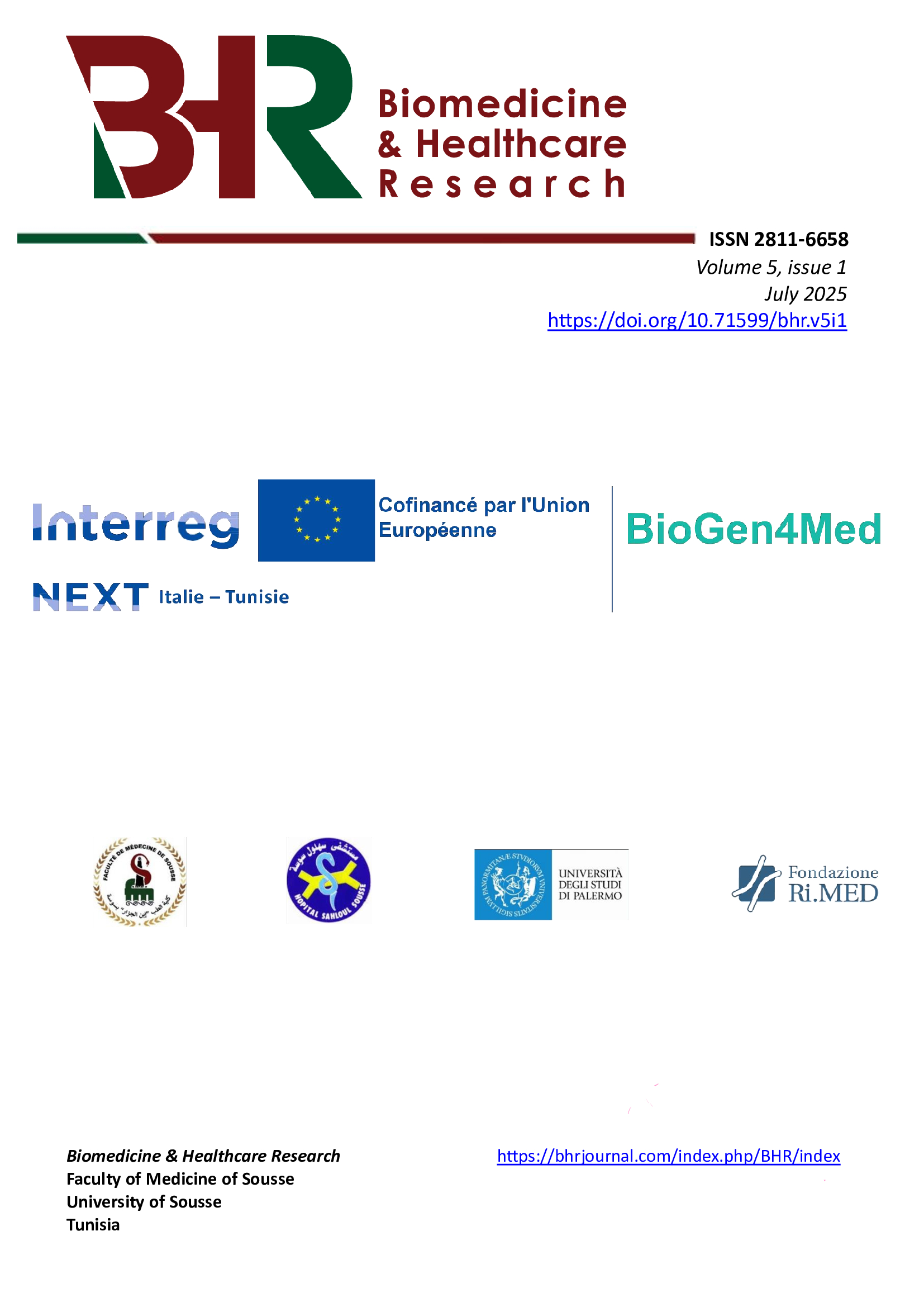Imposter syndrome among nurses: Prevalence and associated factors
DOI:
https://doi.org/10.71599/bhr.v5i1.131Keywords:
Imposter syndrome, Nurses, Prevalence, Associated factorsAbstract
Introduction: Impostor syndrome (IS) can lead to substantial psychological distress among nurses, with potential repercussions for both their mental well-being and the quality of care they provide. This study aimed to assess the prevalence of impostor syndrome among nurses and to identify associated risk factors.
Methods: A cross-sectional study was conducted among all nurses (N = 612) working at Sahloul University Hospital in Tunisia between October 2023 and May 2024. The Clance Impostor Phenomenon Scale (CIPS), a validated 20-item instrument, was used to evaluate the presence and severity of IS. Multivariable logistic regression analysis was performed to determine factors associated with high impostor experiences, with a p-value of < 0.05 considered statistically significant.
Results: A total of 436 nurses participated in the study, yielding a response rate of 72.1%. The mean age of participants was 32.34 ± 10.01 years, and women constituted 61.0% of the sample. Additionally, 72.2% of respondents worked in medical departments. The mean CIPS score was 54.71 ± 12.36, indicating a moderate level of impostor syndrome. Notably, 27.1% of participants scored in the high IS range. Multivariable analysis identified two significant risk factors for high impostor experiences: being under 25 years of age (OR = 5.022; 95% CI: 2.160–11.680; p < 0.001) and working in a surgical department (OR = 2.920; 95% CI: 1.676–5.087; p < 0.001).
Conclusion: This study highlights the significant prevalence and impact of impostor syndrome among nurses. Early identification of at-risk individuals is crucial for implementing targeted interventions that reduce psychological distress and support both nurse well-being and the quality of patient care.
Downloads
Downloads
Published
How to Cite
Issue
Section
License
Copyright (c) 2025 Chaieb Radhia, Kacem Imen, Suissi Jihed, Sahli Jihen, Imen Belgecem, Ben Rejeb Mohamed

This work is licensed under a Creative Commons Attribution-NonCommercial-NoDerivatives 4.0 International License.





